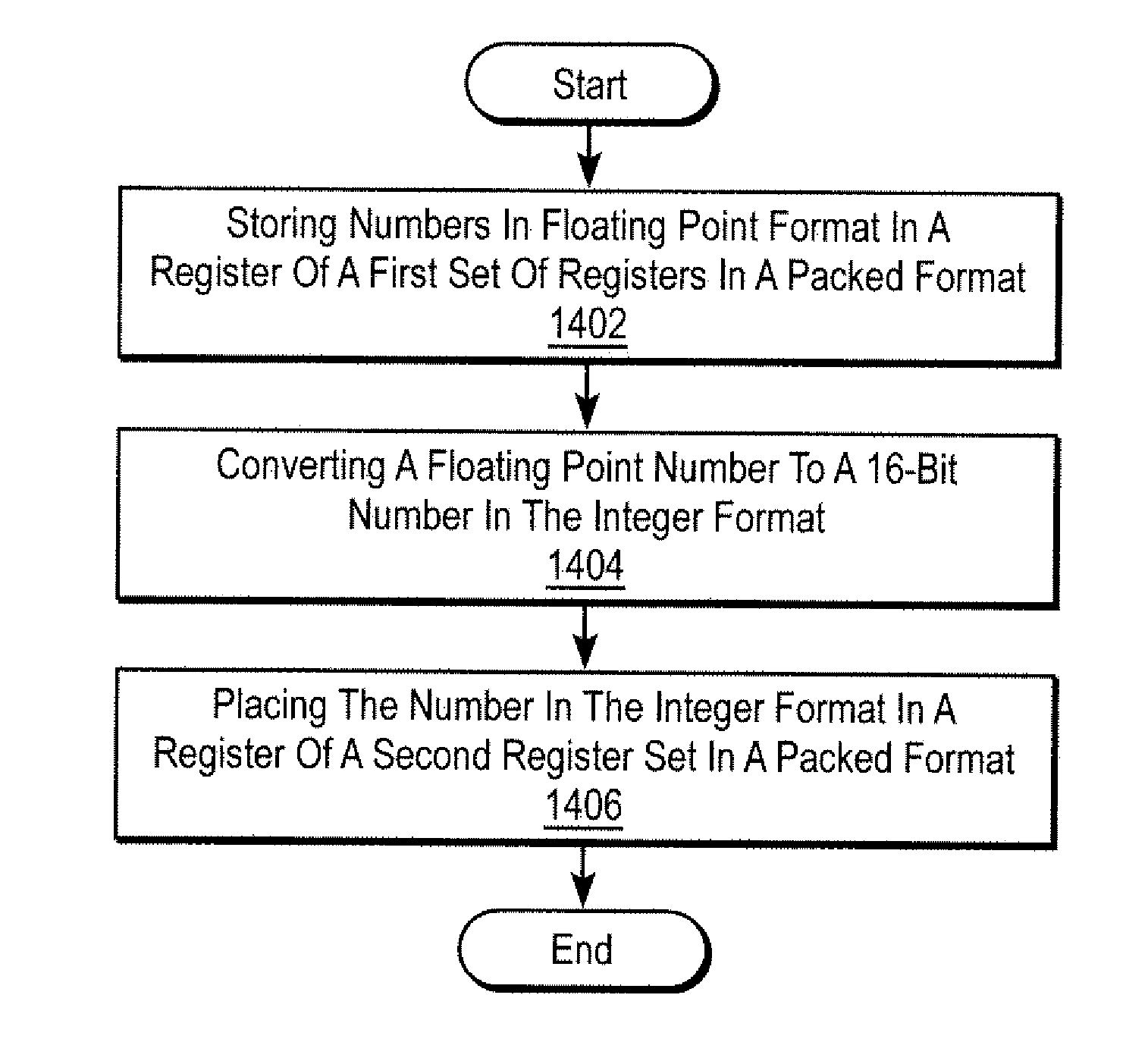Method and apparatus for floating point operations and format conversion operations
a floating point and format conversion technology, applied in the field of parallel manipulation of data, can solve the problems of increasing processing time, excessive memory required for storage, and waste of memory by using multibyte representations
- Summary
- Abstract
- Description
- Claims
- Application Information
AI Technical Summary
Problems solved by technology
Method used
Image
Examples
Embodiment Construction
[0047]A method and apparatus are described that allow conversions between an integer format and a floating point format using a floating point arithmetic unit. A floating point arithmetic unit allows for performance of packed or scalar conversion operations. In one embodiment, the floating point arithmetic unit operates on single precision floating point numbers. In another embodiment, the floating point arithmetic unit operates on double precision floating point numbers.
[0048]In one embodiment, additional bit positions are added to operational units and data paths of the floating point arithmetic unit to accommodate the maximum possible shift required by a conversion operation. The additional bit positions enable the floating point arithmetic unit to be easily used for conversions both from floating point format to integer format and from integer format to floating point format. A circuit is provided to latch numbers coming into the floating point unit for conversion in a particula...
PUM
 Login to View More
Login to View More Abstract
Description
Claims
Application Information
 Login to View More
Login to View More - Generate Ideas
- Intellectual Property
- Life Sciences
- Materials
- Tech Scout
- Unparalleled Data Quality
- Higher Quality Content
- 60% Fewer Hallucinations
Browse by: Latest US Patents, China's latest patents, Technical Efficacy Thesaurus, Application Domain, Technology Topic, Popular Technical Reports.
© 2025 PatSnap. All rights reserved.Legal|Privacy policy|Modern Slavery Act Transparency Statement|Sitemap|About US| Contact US: help@patsnap.com



